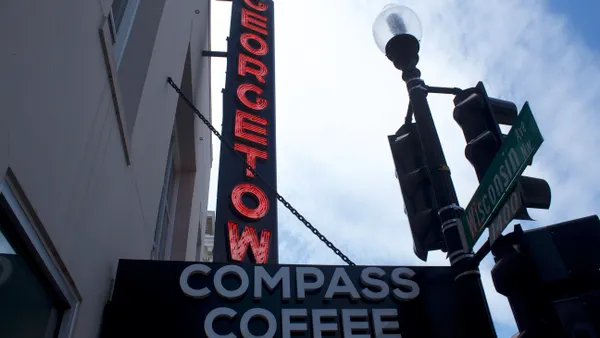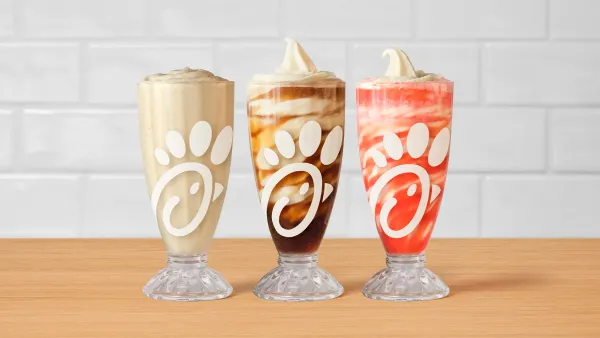Dive Brief:
- DoorDash's market share of delivery transactions grew from 27% to 35% during the first half of September, while Uber Eats slipped from 29% to 25% of spend and Grubhub fell from 30% to 22%, according to an Edison Trends report emailed to Restaurant Dive.
- Since March 2018, Grubhub dropped from first place in terms of consumer spend to third place.
- Even though Caviar's share of consumer spend was the lowest, its customers spent the most, with an average order of $42. Uber Eats customers spent the least with an average of $27 per order.
Dive Insight:
Since entering all 50 states at the start of the year, DoorDash has been making big moves in the food delivery industry, so it's no surprise that its share of transactions has risen. It secured $600 million in funding in May and opened a line of credit for $400 million ahead of its initial public offering. Its valuation as of August was at $12.6 billion.
It surpassed Grubhub's share of consumer spend in March, when DoorDash, Grubhub and Uber Eats were fairly close with 27.6%, 26.7% and 25.2% of market share, respectively, per another Editon Trends report from earlier this year. And there is good reason why DoorDash is gaining ground over its competitors. It increased its marketing and advertising reach, launching its first TV ad campaign in January and starting a multi-channel campaign this week, and gained partnerships with brands like McDonald's and Panera as restaurants expand their delivery capabilities. It also announced an exclusive partnership with Outback Steakhouse in September.
Its market share could have also risen after the acquisition of Caviar for $410 million in August. Caviar's share of consumer spend clocked in at about 2% in the Edison Trends report.
Given all of these moves, DoorDash is in a position to dominate the delivery segment, but Grubhub and Uber Eats have also made strategic moves and shouldn't be written off. Zacks Equity Research expects Grubhub's new partnerships with Dine Brands, McDonald's and Panera along with Yum Brands, Shake Shack and Dunkin' Brands, to help the company expand its footprint and consumer base. It also added a rewards program, called Perks, in September that integrates with partner restaurant loyalty programs. The delivery provider reported 20.3 million active diners at the end of Q2 2019, up 30% compared to Q2 2018.
Uber Eats secured an exclusive partnership with Sweetgreen, has expanded its virtual kitchen options and will soon offer delivery-only meals from Rachael Ray in 10 cities. It also updated its app earlier this year, adding a tracker and making it more user friendly. Uber also integrated Uber Eats into its Uber app and added Uber Pass, which combines ridesharing, bikes, scooters and Uber Eats into a monthly subscription service. These moves could help make the service more attractive to existing Uber customers and potentially gain new ones.
Working against DoorDash is the data breach that impacted 4.9 million customers. If Grubhub maintains its momentum of new partnerships and diner growth, it could catch up to DoorDash's lead.











